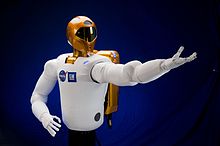Unmanned space travel

As unmanned space is any space activities, the performance of tasks without human intervention on site is guaranteed. This includes all unmanned space vehicles ( telepresent / partially / autonomous) that do not directly support a manned space mission (interaction with astronauts, interaction with a habitat or its environment, ...). Unmanned space travel is thus the counterpart of manned space travel .
background
A distinction between manned and unmanned space travel existed indirectly at the beginning of the Apollo program (1961). The opponents of the program saw little scientific use in manned space travel (with the aim of landing on the moon). The arguments against such a project were therefore always of a financial nature - with the intention that the costs for the Apollo program could be better used; whether in science, technology research or medicine. Indirectly in this context means that the extent of unmanned space travel was not yet apparent at this point in time or that military space travel (launch vehicles and spy satellites) was not called into question.
At that time, unmanned space travel was still in its infancy because the electrotechnical development that allowed (partially) autonomous systems was not yet sufficiently mature. The first Pioneer spacecraft were a complete failure. This only gradually changed with the Ranger , Mariner and Surveyor spacecraft, which were more reliable and functional. While unmanned space travel was of little importance at the beginning of the Apollo program, the space probes produced more and more valuable scientific findings towards the end of the program:
The Mariner -4 probe (1964) carried out scientific measurements on Mars and took 22 images that were later transmitted to Earth. The Pioneer 10 probe (1972) was the first to detect zodiacal light outside the earth, cross the asteroid belt and reach Jupiter in order to carry out scientific measurements and create images. Viking -1 and 2 (1975) reached Mars and deposited landers on it. If the scientific performance of the Apollo program in relation to lunar exploration is compared with this, the findings are modest. Numerous samples were taken (382 kg of lunar rock ), measuring instruments were installed and pictures were taken, but the costs differ significantly from those of unmanned probes. While the Apollo program is estimated at around 25 billion US dollars (costs at the time), the Ranger program cost only 170 million dollars (costs at the time). If the costs of all space probe programs of that time were added up, the amount would still be less than that for the Apollo program, but the scientific knowledge would be far greater.
This differentiation between manned and unmanned space travel increased with the commercialization of near-earth space through communication, earth observation and navigation satellites and with it the question: "Why should humans penetrate into space when the task is also carried out by a robotic mission could?".
Unmanned space travel
The advantage of unmanned space travel lies in the lack of the “human” factor. In order to survive in the vastness of space, a person needs: life support systems for air and water treatment, food, space and sleep. Satisfying people's needs increases costs due to the additional technology required (e.g. life support systems, hygiene facilities, ...) and a general increase in mass. A life support system is not needed by an autonomous unit, just like food and space in the sense of living space (structural mass increase). Electronic systems can work around the clock 365 days a year and (if provided) transmit data to earth. The reduction of mass and the additional systems in unmanned space travel leads to considerable cost efficiency compared to manned space travel . The advantage of the “human” factor is the intelligent action on site based on the individual case. For this reason, unmanned systems are used wherever the boundary conditions are known or can be guessed at. For example, long flights to distant planets and their exploration without returning are only possible unmanned. In addition, unmanned probes can withstand radiation levels that are fatal to humans.
Unmanned space travel can be broadly divided into satellites (especially earth satellites) and space probes. Transport systems that are not used to transport people can also be counted indirectly. Below is a list of unmanned systems:
-
Satellites for different application areas like
- Weather satellites
- Spy satellites
- Earth observation satellites
- Telecommunication satellites
- Navigation satellites
- Space telescopes some also act as probes outside of earth orbit.
- ...
- Space probes
- Payload transporter (indirect)
- Launchers
- Space planes like the Boeing X-37 , UPS, ...
See also
Web links
swell
- ↑ Landing a Humanoid Robot on the Moon in a 1000 Days "Project M". (PDF; 1.5 MB) NASA , February 10, 2010, accessed on March 26, 2011 (English).
- ^ John M. Logsdon: Chapter Two - Project Apollo: Americans to the Moon (pp. 414f). (PDF; 1.0 MB) NASA , accessed on March 27, 2011 (English).
- ^ G. Russo et al .: USV: Unmanned Space Vehicle (Italy). (PDF; 475 kB) Centro Italiano Ricerche Aerospaziali, 2008, accessed on March 28, 2011 (English).

